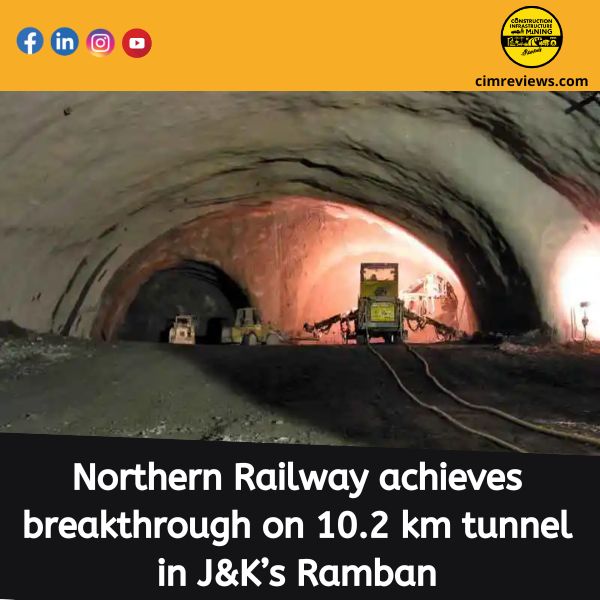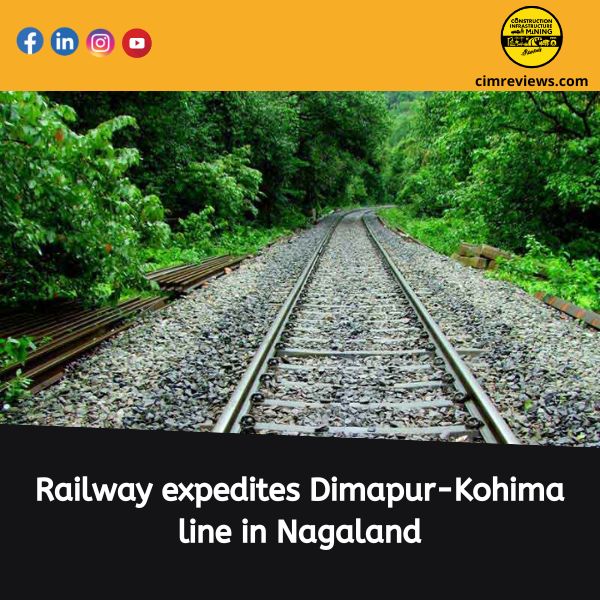Over the past four-five years, tunnel construction in the country has increased due to longer lengths, challenging terrain, urbanization, and increased infrastructure demand. The railway sector pioneered tunnel development, with the hydropower sector having the most.
Water supply tunnels increased with urban renewal missions and programs. Roads and highways saw increased construction, particularly in hilly regions. Metro rail tunnelling emerged for dense cities.
India has over 2,500 km of completed tunnel length, with the hydropower sector having the highest share at over 1,200 km, followed by irrigation, railways, metro tunnels, water and sewerage, and roads. The pipeline of 1726 tunnels in India spans 3600 km, with 75% completed, 22% under construction, and 3% recently awarded. 62% of the tunnel length has been completed, with 36% still under construction.
Jammu & Kashmir has the largest pipeline with 200 tunnels, followed by Maharashtra with 140, Himachal Pradesh with over 100, Andhra Pradesh with 90, and Arunachal Pradesh with 80 tunnels, with Maharashtra having the most.
Developments in Tunneling Methods and Tools
Advancements in tunnelling techniques have accelerated underground space engineering, increasing demand for high-tech equipment. Over the next 3–4 years, an estimated Rs. 1170 billion will be invested in acquiring equipment and machinery for upcoming tunnel projects.
The Indian tunnelling industry is adopting modern technology, particularly in regions with geological challenges, to overcome these challenges. Mechanized methods like tunnel boring machines and the New AustrTunnelingling Method are being used instead of conventional methods.
NATM, a versatile material, is increasingly used in tunnel construction across various sectors, with over 380 km of upcoming tunnels incorporating TBMs alongside complementary techniques. Micro-tunnelling is gaining acceptance for deep water supply and sewer lines in congested areas, while conventional methods like drill and blast remain dominant in over 200 km of ongoing tunnel projects.
TBMs, EPBMs, and slurry machines are expected to dominate metro, irrigation, and water supply tunneling projects, while drilling jumbos and excavators will see increased demand. Mechanized methods in urban environments drive specialized equipment demand. Contractors are utilizing modern tunnel construction techniques, including video surveillance, integrated control systems, and innovative materials like fiber bolts and geosynthetics, to create smart tunnels.
Contractors are utilizing innovative methods like P5 system, sequential excavation, and ground freezing to overcome geological challenges, while advanced technologies like aerial and GPS-based surveys enhance tunnel construction efficiency.
New Trends & Materials
The Indian tunnelling industry has adopted advanced technologies like TBM and NATM, utilizing steel fibres in shotcrete, self-drilling anchor bolts, PU grout, pipe roofing, and pre-grouting techniques for tunnel construction in congested urban areas. The tunnel equipment market is experiencing significant growth due to.
increased investments and land pressure, necessitating the construction of underground structures in the metro, water, sewerage, and road sectors. Innovative materials are being used to enhance tunnel durability and strength, particularly in the Himalayan and peninsular regions, due to the increasing complexity of tunnel construction.
Some Landmark Tunnel Projects
Hydro tunnels dominate India’s hydropower sector, with the Upper Siang Hydropower Project in Arunachal Pradesh being the most prominent design. Other key projects include the Dibang, Sawalkote, and Subhanshri Middle hydroelectric projects.
Highway and rail tunnel projects in hilly areas are being executed, including the Rishikesh Karanprayag railway project, NCRTC RRTS project, and USBRL railway project. The longest tunnel, T-49, is the longest in the country, covering 97.4 km (87% of the section’s total length).
Other challenging projects include the Kaleshwaram Lift Irrigation Scheme, Mumbai Metro Line 3, and the Mumbai-Ahmedabad high-speed rail project. The project includes 27 Main tunnels covering 97.42 km and 8 Escape tunnels covering 66.4 km, resulting in a cumulative length of 163.82 km.
Risks & Challenges During Tunneling
The tunnelling sector in India faces challenges due to outdated contract documents and poor contracting practices, resulting in ambiguity between implementing agencies and contractors. Tunneling contractors face a shortage of skilled manpower to handle sophisticated equipment due to inadequate training, causing them to struggle to overcome obstacles.
- Geological surprises in the Himalayan region, including challenging terrains, thrust zones, shear zones, lack of stress mapping, high rock cover, water or gas ingress, geothermal gradient, and seismicity. Insufficient budget and time for thorough investigations, despite expert agencies’ availability, can negatively impact tunnelling activities and lead to high contractual costs.
- Despite expert agencies’ availability, insufficient budget and time for thorough investigations can negatively impact tunnelling activities and lead to high contractual costs.
- Tunnel construction presents challenges in risk management due to higher safety risks and inadequate safety measures. The construction progress of long tunnels is impacted by health and safety risks due to inadequate ventilation and insufficient safety measures in case of sudden water ingress.
- Other issues include environmental impact, skilled manpower requirements for sophisticated equipment maintenance, equipment-related issues, and local population opposition during land acquisition. Project risks and challenges vary based on geology, location, developer, contractor, and contract terms. Neglect during pre-construction, particularly during geological investigations, can lead to overruns and potential project abandonment or stalling.
- Tunnel risks involve unpredictable soil conditions, difficult environments, and the complexities of rocks. Interrelated incidents like fire, landslides, and flooding can lead to delays, environmental impact, cost overruns, and damage to surrounding properties.
Tunnel projects should be systematically planned and executed to minimize risks. This includes thorough investigations, equipment selection, contracting practices, statutory clearances, competent subcontractors, and considering social issues. The reliability of the predicted geology is crucial.
Project-specific context governs risk perception. Challenges in project management can lead to increased costs and longer completion periods, necessitating careful consideration of risk likelihood and impact within specific project conditions.
Tunneling Growth Opportunities
India is a rapidly growing tunnel construction market, with projects increasing in size and complexity. Investments in tunnel construction have led to a surge in tunnel equipment market growth. The outlook for tunnel development remains promising as land pressure increases for economic and social uses. New tunnel projects in India.
hold significant potential for contractors, consultants, and suppliers. Government schemes like the Gati Shakti Master Plan and Bharatmala, Chardham Connectivity, AMRUT, and Smart Cities Mission will enhance infrastructure capabilities and fill the tunnelling sector.
Indian and foreign joint ventures are expected to invest in future tunnel construction projects, focusing on risk assessment, design, and technology to reduce construction risks and ensure timely completion. India’s tunnelling projects are implementing smart and digital solutions to improve efficiency, safety, and cost savings, but urgent issues like land acquisition, contractual disputes, and skilled manpower shortages need resolution.
Group Media Publication
Construction, Infrastructure and Mining
General News Platforms – IHTLive.com
Entertainment News Platforms – https://anyflix.in/
Legal and Laws News Platforms – https://legalmatters.in/
Podcast Platforms – https://anyfm.in/










%20/23%20cimr%204.jpg)
